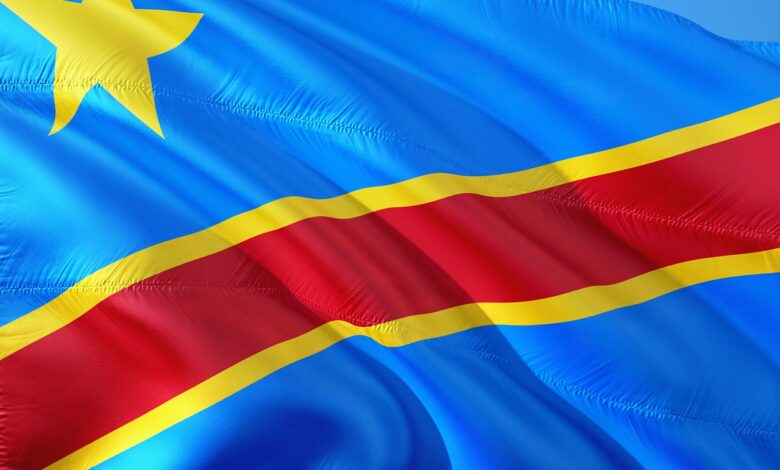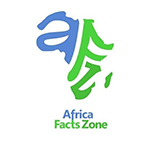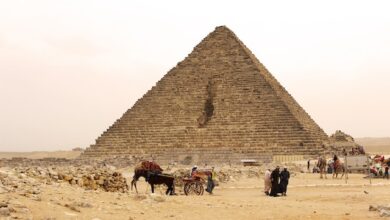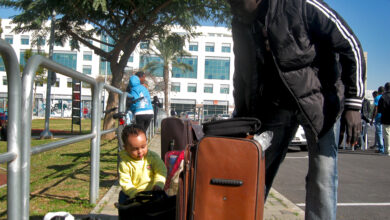The Republic of Congo Facts, History, Culture & Travel – Africa Facts Zone
Discovering the Republic of Congo: A Comprehensive Overview

Economy of the Republic of the Congo: Mixture of subsistence farming, petroleum extraction, and industrial services
GDP: $11.576 billion (nominal, 2019 est.)
Main Industries: Petroleum extraction, cement, lumber, brewing, sugar
Population: 5,244,363 (2018)
Gini Coefficient: 48.9 high (2011)
Exports: $12.35 billion (2012)
Labour Force: 2,173,950 (2019)
Human Development Index: 0.571 medium (2021)
The Republic of Congo, often referred to as Congo-Brazzaville, is a hidden gem in Central Africa that offers a rich tapestry of culture, history, and natural beauty.
This article aims to delve deep into the various facets of this fascinating country, exploring its geography, politics, economy, and social dynamics.
Whether you’re a traveller, a student, or simply curious about this part of the world, join me as we uncover the layers that make up the Republic of Congo.
Geography: The Heart of Central Africa
The Republic of Congo is nestled in the heart of Central Africa, bordered by several countries:
- To the west: Gabon
- To the northwest: Cameroon
- To the northeast: Central African Republic
- To the southeast: Democratic Republic of the Congo
- To the south: Angola (Cabinda exclave)
- To the southwest: Atlantic Ocean
The Republic of Congo covers an area of approximately 342,000 square kilometres and is characterized by diverse landscapes, including tropical forests, savanna plains, and rugged mountains.
The Congo River, one of the longest rivers in the world, plays a crucial role in the country’s ecosystem and economy.
Climate and Biodiversity
The climate is predominantly tropical, with temperatures averaging around 24°C (75°F) year-round. The country experiences a wet season from March to November and a dry season from June to August.
The Republic of Congo is home to one of the largest areas of tropical peatlands, which are vital for climate regulation.
This region supports a rich biodiversity, including numerous species of flora and fauna unique to the area. The forests are inhabited by various wildlife, including the western lowland gorilla, which has been the focus of conservation efforts due to habitat loss and poaching.
Also Read: Exploring the Enigmatic Comoros Facts, History, Culture & Travel – Africa Facts Zone
Political Landscape: A Historical Perspective
The Republic of Congo has a complex political history. Gaining independence from France in 1960, it was initially a Marxist-Leninist state until the early 1990s.
The country has experienced significant political upheaval, including a civil war in the late 1990s that led to President Denis Sassou Nguesso returning to power.
Current Governance
President Sassou Nguesso has been in power for multiple terms since 1997, with his most recent re-election occurring in March 2021.
His government focuses on various reforms aimed at improving governance, economic stability, and social inclusion. Prime Minister Anatole Collinet Makosso, appointed in May 2021, leads these efforts.
Despite the government’s initiatives, challenges remain. The country ranks low on the Human Development Index (HDI), reflecting ongoing issues with poverty, inequality, and social exclusion.
Economic Overview: The Oil Dependency
The Republic of Congo’s economy is heavily reliant on oil, which accounts for approximately 50% of its GDP and 80% of its exports.
The country ranks as the third-largest oil producer in Sub-Saharan Africa. However, this dependence on oil has made the economy vulnerable to fluctuations in global oil prices.
Recent Economic Trends
- 2023 Economic Growth: The economy is estimated to have grown by 1.9% in 2023, driven by the non-oil sector. However, the real GDP per capita growth remained negative, with poverty affecting around 46.8% of the population.
- Inflation and Fiscal Policies: The government has been implementing fuel subsidy reforms to maintain fiscal surpluses, which has led to a temporary rise in inflation, reaching 4.3% in 2023.
- Future Projections: GDP growth is expected to stabilize at around 3.5% in 2024, with ongoing efforts to diversify the economy and reduce debt vulnerabilities.
- Social Dynamics: Challenges and Opportunities
The Republic of Congo faces significant social challenges, particularly in health and education. The Human Capital Index (HCI) stands at 0.42, below the average for low-middle-income countries.
Also Read: The Republic of Chad Facts, History, Culture & Travel – Africa Facts Zone
Health and Education
- Infant Mortality: The infant mortality rate is alarmingly high at 32 deaths per 1,000 live births.
Education: By the end of primary education, only 37% of children achieve the required proficiency levels in mathematics and 48% in French. - Access to Services: While 67% of urban residents have access to electricity, this drops to just 12.4% in rural areas. Clean water access is similarly uneven, with 74% of the population having access but only 46% in rural regions.
Social Inequality and Vulnerability
Social exclusion is a pressing issue, particularly affecting women, youth, persons with disabilities, and indigenous populations.
The 2021 Gender Inequality Index ranked the Republic of Congo 147 out of 170 countries, underscoring the need for targeted policies to address these disparities.
Cultural Richness: A Tapestry of Traditions
The Republic of Congo boasts a rich cultural heritage influenced by various ethnic groups, the largest of which is the Kongo.
The country is known for its vibrant music, dance, and art, which are integral to community life and expression.
Languages and Ethnic Groups
With over 62 languages spoken, the Republic of Congo is a linguistic mosaic. French is the official language, but many local dialects are widely used, reflecting the country’s diverse cultural landscape.
Conclusion: The Future of the Republic of Congo
The Republic of Congo stands at a crossroads, balancing its rich natural resources and cultural heritage with the pressing need for political stability and social equity.
As the country navigates its challenges, there is potential for growth and development, particularly in diversifying its economy and improving the quality of life for its citizens.
With a young population and abundant natural resources, the Republic of Congo has the opportunity to carve out a brighter future.
By addressing issues of governance, economic diversification, and social inclusion, the nation can harness its potential and emerge as a key player in the region.
FAQs About the Republic of Congo
What is the capital of the Republic of Congo?
The capital city is Brazzaville.
What languages are spoken in the Republic of Congo?
French is the official language, but there are over 60 local languages spoken throughout the country.
What is the main economic activity in the Republic of Congo?
The economy is primarily driven by the oil sector, which accounts for a significant portion of GDP and exports.
What are the major health challenges in the Republic of Congo?
High infant mortality rates and limited access to healthcare services are significant health challenges.
Is the Republic of Congo safe for travellers?
While some areas are safe, travellers should be aware of political instability and potential health risks.
What is the climate like in the Republic of Congo?
The climate is predominantly tropical, with a wet season and a dry season.





